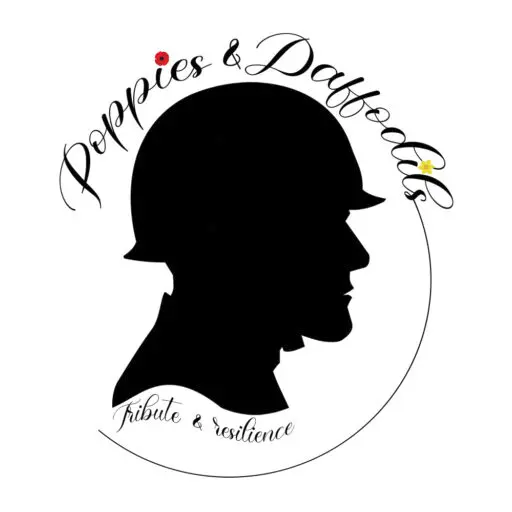The disabling injuries of soldiers : the history and legacy of the “Gueules Cassées”
Throughout history, soldiers have paid a physical and psychological price for their service. Among war injuries, “disabling injuries” hold a particular significance as they irrevocably alter the lives of those who endure them. These injuries include amputations and facial mutilations, giving rise to the emblematic term “Gueules Cassées” (“broken faces”). Understanding this reality, as well as advancements in their treatment and recognition, is essential to honoring their sacrifice.
The “Gueules Cassées”: a testimony to the horrors of modern conflicts
The term “Gueules Cassées” emerged during World War I to describe soldiers who suffered severe facial injuries. The trench warfare, intense bombardments, and use of new, destructive weapons led to unprecedented injuries. Soldiers with facial disfigurements were often condemned to isolation, as societal reactions were marked by rejection or pity.
Medical advancements: surgery and prosthetics
Faced with the scale of these injuries, medicine had to adapt rapidly. Pioneers like French surgeon Hippolyte Morestin laid the foundations of modern reconstructive surgery. Innovative techniques were developed to repair facial tissues, graft facial parts, and design prosthetics. These prosthetics, often made of ceramic or metal, helped injured soldiers regain some of their appearance and dignity.
Disabling injuries today
Despite technological and strategic advancements, soldiers continue to suffer disabling injuries. Amputations caused by explosions, traumatic brain injuries, and severe burns remain prevalent in modern conflicts. The difference lies in improved care and rehabilitation devices. For example:
- Robotic prosthetics provide greater autonomy for amputees.
- Aesthetic and reconstructive surgery continues to advance, offering more natural solutions.
- Rehabilitation programs now incorporate psychological and social support.
Recent estimates indicate:
- Amputations: More than 1,500 amputations are recorded annually among active soldiers and veterans in countries like the United States due to recent conflicts.
- Traumatic brain injuries (TBI): Around 20% of military personnel deployed in combat zones experience head injuries, often caused by explosions.
- Severe burns: Approximately 5% of war casualties suffer burns requiring prolonged care and intensive rehabilitation.
- Facial injuries: While less common, these injuries have profound psychological impacts and pose particular challenges for reconstructive surgery.
Many specialized centers play a vital role in rehabilitating injured military personnel:
- France: The Institution Nationale des Invalides is a historical and modern center providing physical and psychological care for wounded soldiers.
- United States: The Walter Reed National Military Medical Center is renowned for its expertise in prosthetics and rehabilitation.
- United Kingdom: The Defence Medical Rehabilitation Centre Stanford Hall is a flagship facility for British soldiers.
The role of associations: essential support
The “Gueules Cassées” movement also inspired the creation of associations to support wounded soldiers. In France, the association des “Gueules Cassées“,, founded in 1921, is a prime example. It advocates for the recognition of war injuries, funds medical care, and supports medical research.
Globally, initiatives like the UK’s “Help for Heroes“ or the US’s “Wounded Warrior Project“ provide various services:
- Professional reintegration support.
- Psychological assistance.
- Adaptive sports activities to restore confidence.
Animal-assisted therapy : an innovative approach
Animal-assisted therapy, known as zootherapy, has significantly developed in recent years for wounded soldiers. Dogs and horses play crucial roles in rehabilitation. For example:
- Assistance dogs: Beyond providing emotional support, they are trained to help soldiers with amputations or post-traumatic stress disorder (PTSD). In the United States, organizations like “K9s For Warriors” offer these services.
- Equine therapy: Working with horses improves balance, coordination, and fosters an emotional connection beneficial for soldiers with physical or psychological injuries. Programs such as “Warrior PATHH“ and “Equine Immersion” in the United States, or the Département des Blessés Militaires et Sport (DBMS) at France’s Centre National des Sports de la Défense (CNSD), offer specialized services. In Ukraine, the” Spirit ” Association provides equine therapy for soldiers injured on the front line.
These approaches, often combined with traditional medical care, help restore confidence and autonomy to wounded soldiers.
Life after care: what happens to injured soldiers?
Once medical care ends, life remains a daily challenge for many wounded soldiers. They must learn to live with physical or psychological disabilities that profoundly transform their existence. Some soldiers successfully reintegrate through:
- Professional retraining: Programs tailored to help them acquire new skills suited to their abilities.
- Psychological support: Essential for overcoming trauma, often provided through support groups, individual therapy, or associations.
- Adaptive sports: A source of resilience and self-esteem, offering opportunities for socialization and achievement.
However, many face obstacles such as discrimination in the job market, social isolation, or insufficient access to specialized healthcare. Associations and government programs play a key role in ensuring their social inclusion and quality of life.
Recognition and remembrance
Soldiers with disabling injuries must not be forgotten. Their battle does not end on the battlefield but continues in their daily lives. Commemorations, museums, documentaries, and educational initiatives play a crucial role in raising public awareness of their sacrifices. Social inclusion, medical advancements, and associative support are essential ways to honor these men and women who, despite their injuries, remain symbols of courage and resilience.
